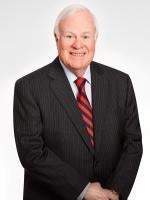On January 28, 2014, Northwestern University football players took a historic first step toward having collegiate student-athletes recognized as unionized workers by filing a petition with the National Labor Relations Board (NLRB) seeking to be certified. If the NLRB certifies this union, it would be called the College Athletes Players Association (CAPA), and Northwestern University would have to bargain collectively with CAPA. The petition was backed by the United Steelworkers union, which will pay the CAPA’s legal fees and provide technical support but will not receive union dues from players.
Northwestern University stated that while the issues raised by the players group “deserve further consideration,” the school does not consider its student-athletes as employees and does not believe collective bargaining is the appropriate method to address those issues. The National Collegiate Athletic Association’s (NCAA) immediate reaction was that “there is no right to organize student-athletes” because they are not “employees” within any definition of the National Labor Relations Act and their participation in college sports is voluntary. The NCAA pointed out that student athletes are provided scholarships and many other benefits for their participation.
Collegiate athletics are an extremely profitable enterprise. Last year, Big Ten football schools received $25.7 million, the vast majority of which came from TV rights. Currently, playing in a Bowl Championship Series (BCS) game brings each athletic conference $23.6 million, and that number should rise significantly when the new College Football Playoff system goes into effect next season. Forbes has reported that ESPN is expected to pay around $500 million for playoff games.
For the time being, the CAPA has chosen to avoid the hot-button issue of whether student-athletes should be paid. It is, however, demanding limited contact at practices and additional independent concussion experts at games, requiring schools to pay for medical expenses related to sports-related injuries, and extending athletic scholarships to cover the full cost of attending college, including expenses such as laundry and travel. Additionally, the CAPA is seeking to have a small percentage of the revenue generated by college sports invested in a continuing education trust fund for athletes who turn professional before graduating.
If the NLRB ultimately certifies this group of players as a union, the CAPA might target the massive revenue generated by collegiate athletics. The NCAA is already fighting efforts from student-athletes to lay claim to a share of its revenue. Former UCLA basketball star Ed O’Bannon filed suit against the NCAA, its licensing company, and videogame giant EA Sports five years ago, alleging that they had profited from the use of his and other players’ likenesses in EA sports video games after they graduated.
In considering the merits of the petition filed, the NLRB will consider whether the student-athletes who receive scholarships fit the definition of "employees" under the National Labor Relations Act. In a line of NLRB cases that considers the issue of whether graduate student assistants are employees under the NLRA and thus eligible to vote in a union representation election, the NLRB has held that the standard to be met is whether the student assistants' main duties are in furtherance of the economic interests of the university as opposed to being in furtherance of their studies. As presently constituted, the NLRB has been shown to be receptive to the interests of labor organizations so it is foreseeable that it could determine Northwestern football players are "employees" under the NLRA because their main duties are in furtherance of the economic interests of Northwestern and the NCAA, on the basis that their participation in intercollegiate sports heightens the University’s public standing and generates revenue.
It remains to be seen what the scope and practical effect of such a decision would be, particularly if the NLRB’s rationale is the revenue generated by the athletes’ activity. Could participants in sports that do not generate massive revenue, like wrestling, lacrosse, or women’s sports, likewise be considered “employees”? How about students who receive non-athletic scholarships? Another question that would likely arise is how student-athletes from public institutions would be affected, if at all. The NLRA does not cover public-sector employees.
The NLRB could take years to resolve this issue so we do not expect any immediate changes. However, higher education institutions are encouraged to monitor this case. We will update our clients on any further developments, as necessary.



 />i
/>i
